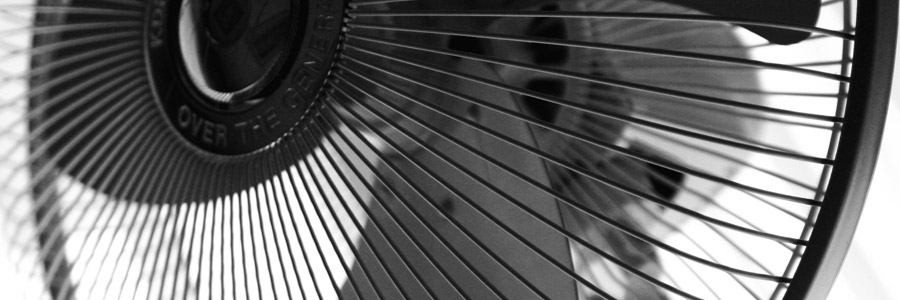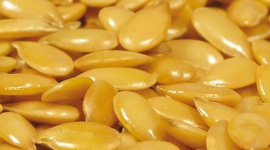The principles of ventilation
By Geary Coogler BSc Floriculture / Horticulture
Then there is the practice of ventilation, putting it all together or the ‘how and when’ part of the discussion. What are the goals behind ventilation? What is the purpose? Well, ventilation moves the air around - but how does this help? There are 2 basic types of ventilation system, which work in different ways: the first is an open system, in which air is exchanged. The second is a closed system where no air exchange occurs. Circulation refers to the movement of the air, which is a feature of both open and closed systems. Air exchange is the physical exchange of air in one defined location for a new air mass external to that location.
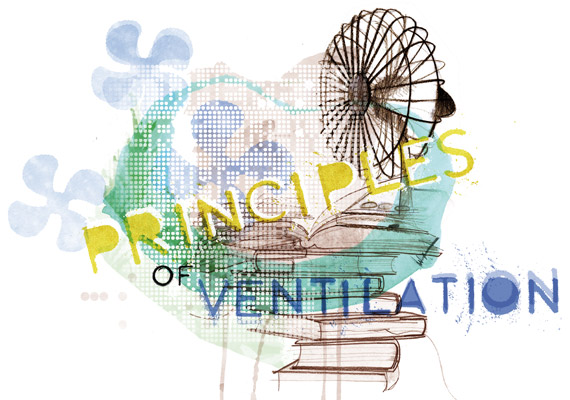
Circulation
Circulation basically means moving the air so that like heat and humidity are moved from one area to another. Air that sits still for any amount of time begins to separate, a process known as stratification, and this effects both the temperature and composition of the air. This can lead to situations such as thermal layering and shortages of critical gases such as oxygen or carbon dioxide.
Air Exchange
Air Exchange is similar to circulation, but not quite. Air exchange (an open ventilation system) means bringing in air from outside the closed area to replace the air that is already there; the air also moves around in the process, creating circulation. Temperature, gas exchange, and humidity can all be affected positively through the exchange process.
Open & Closed systems
Inside a grow room or greenhouse, the principles remain the same. It is all about growing plants in a controlled area. Plants need light and water to grow and survive. Plants take in light, take up water, and ‘breathe’ carbon dioxide plus a little oxygen and they use these 4 components to produce energy from light and carbohydrates, to store that energy. These carbohydrates serve as the basic building blocks for all the plant to grow and develop. Releasing the energy from the carbohydrates requires oxygen in a process known as respiration. Respiration releases energy for the plant when required. When the air is still, these processes lead to an imbalance of gases in the leaf/air interface zone, an increase in humidity close to the plant, and warmth from the light or radiant energy given off by the sun or some other light source.
In a closed system, circulation serves to mix the oxygen, humidity and warmth with air further away from the plant(s), but still within the grow room or vented area. This moderates the temperature, equals out the humidity, and ensures that enough carbon dioxide and oxygen are available near to the leaves - and that is essential for the very basic of life processes, photosynthesis and respiration. However, this mixing process does not replace gases that have been used up. Neither does it remove the excess heat (measured in BTUs, Britisch Thermal Units), or remove the humidity from the air; it simply mixes the air to prevent any layering effects and depletion zones.
On the other hand, where a grow room or area is equipped to replace the air in the area concerned with drier air, or cooler air, the effect is to remove moisture or heat from the grow space. Open systems achieve this by actually replacing the air inside the vented area. Constant circulation to maintain air movement, and air exchange when the temperature or humidity gets too high can be achieved through air exchange. Even if you had an air-tight room at a perfect constant temperature and humidity all the time, it would still need to be vented regularly according to a schedule to replace the loss of the critical gases such as oxygen and carbon dioxide. What you need to understand is that even when temperature and moisture need to be raised, the effect is the same since this is based on the incoming air and will be affected up or down accordingly.
Unfortunately, when control of a single element is required, this may negatively affect other needs, so balance and priority become the watch-words. If a grower adds carbon dioxide into the grow space to increase the rate of growth, air exchange becomes harder without losing the CO2 that has been added - a waste of both time and money. In this kind of set-up, it might be necessary to work with a priority system that gives precedence to one element over another at certain times.
Other functions:
Ventilation also has other functions that are accomplished in both circulation and open/closed systems. These secondary items are still based on one of the first two effects, that of regulating humidity. These are:
- Disease control
- Controlling growth/evapotranspiration
- Stress control
1. Disease control
By controlling humidity and temperature, but particularly humidity, it is possible to create an environment that reduces the likelihood of various disease vectors and pathogens. Free moisture is prevented from forming a film on the leaf surface, limiting the ability of the spores from fungi like powdery mildew and anthracnose from gaining an entrance into the leaf tissue interior. Hidden environments are also humidity controlled. Spores from a range of pathogens will degrade if they are in less than perfect conditions, limiting the potential for problems. Some pathogens are disrupted at lower humidity values, such as the group of water moulds including Phythium and Phytophthora; they may continue their activity inside the leaf, but not externally.
Humidity levels also affect insects, in terms of their general survival and the reproduction rates of insects such as mites as well as less problematic insects such as fungus gnats. Humidity also affects another area critical to plant growth and development.
2. Controlling growth/evapotranspiration
The process known as evapotranspiration drives and regulates the movement of fluid, through the plant from the roots until it exits through the stomata in the leaves. Water is taken in through the roots and loaded up with nutrients and materials for plant growth. These are pulled to the top part of the plant as fluid evaporates from specialist pores on the leaf, stomata (stomates), much like water through a straw. The rate at which this process occurs is based on the humidity level in the air near the stoma (stomate). The drier the air, the faster evaporation will occur, the higher the negative pressure at the stoma, and the faster the water will be pulled up to replace it, bringing along the nutrients needed for plant growth with it.
If the air humidity is high, the water will move too slowly to replenish the nutrients and water needed. Conversely, if the air is too dry, the water will move too fast and salts will accumulate in the leaves, or the water may not be able to move fast enough and the plant tissue will burn. The process of evapotranspiration is a vital process in plant growth, acting like the plant’s growth throttle supplying water and nutrients where they are needed.
3. Stress control
Stress is also a critical component in plant development, exerting both negative and positive pressure on the plant. Some stress is required to grow a strong plant: it makes plant stems stronger, controls crop growth and uniformity, and encourages competition. Some air movement, the circulatory kind that exerts pressure on the plant itself, will cause the plant to react. This is stress in action. The plant will respond by strengthening its supportive tissue as well as doing all those things that increase its odds of surviving to flower and develop larger fruits that ripen more quickly (with stronger stems to support those fruit), and increasing the metabolites that the plant normally produces to protect it and increase its potential for reproduction. Too much stress is not good, but too little stress is just as bad. Circulation of the air around the plant can help expose it to just the right amount of stress.
Geographical areas and seasons
It may be the case that instead of an open ventilation system that depends on the exchange of air to achieve temperature reduction and/or humidity control, a closed system would work better. A closed system is used in cases where CO2 is replaced internally, the temperature is regulated with air conditioning units and heat is regulated using heat systems. One or all of these systems, along with a humidification and dehumidification system may well be required for most growing set-ups.
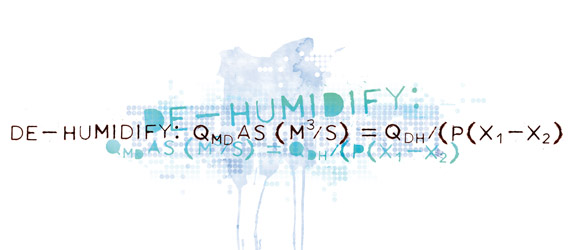
In cooler areas, more heating will probably be needed, and conversely in warmer areas air conditioning will likely be a bigger concern. Dehumidification is typically required in most places; humidifiers are usually only needed in cooler areas when heating is being used, and some other more arid areas. In closed loop systems, not only does the temperature burden become much larger, all the other elements of a normal atmosphere must be monitored and maintained.
Figuring out what you need
Now the fun part: how to figure out which system and which equipment you will need to do the job. Well, short of a course in engineering, it is not going to come from a few paragraphs here. The formulations are very specific to the situation and need. Formulas for figuring out even simple steps such as the air flow rate needed for cooling (m3/s) qc = Hc/(p cp (to – tr)) may mean something to the right people but are not much use to most growers.
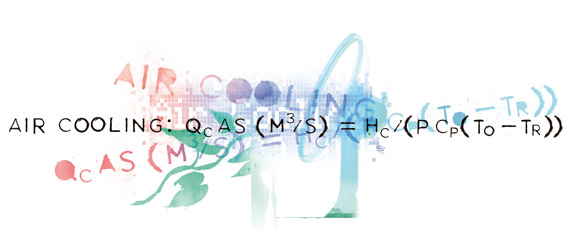
Many factors need to be measured, such as BTU loads, design temperatures, air flow resistance, air density, moisture loads, seasonal averages, and lots more. The designer of a proper growing concern should consult widely in order to design what is needed. Making the wrong choice can cost you a lot in terms of equipment, lost production, and lack of consistency; it is certainly worth investing a little extra in some help with your design and installing a system that matches your needs first time. Even a little research into what your needs really are is certainly better than nothing.
Ventilation needs to achieve all the goals that we have already mentioned. When designing your ventilation system, keep in mind all the factors that will be affected.
- Where will any new air be introduced from? And where will the stale air be expelled to?
- How will the use of CO2 be built into a system that also requires a greater heat load during the same period?
- What capacity is needed for an AC system or heating system? How will this be regulated?
- What will the ducting look like and how will it run?
These are all questions that growers need to think about. This is the only way to avoid headaches and make production easier. Putting all this together is the practical side of ventilation.
